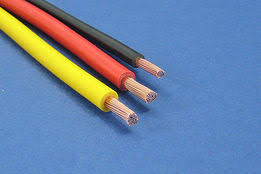

What is an activity to show that thicker wire is better than thinner wire in a circuit?
The effective and consistent transmission of electrical currents or electronic signals is mostly performed by wires or cables with appreciable level of electrical conductivity. These wires are usually worked upon by the use of special tools such as wire crimping machine, wire stripping machine, wire harness machine, wire harness assembly equipment and many others. These equipment can be purchased on our, Cheers Electronic Limited, online platform. Visit our website through the link, www.terminal-crimping.com
The wires and cables are then assembled together to form a wiring harness which can be utilized in different applications. Most times, the probable need for the wiring harness dictates the kind of wire or cable that is expected to be used in the production of the wiring harness and also the type of wiring harness manufacturing equipment to be used. Likewise, we also need to consider the type of wire to be used based on the degree of exposure the wire or cable would be subjected, the amount of electric currents that will be passed through it, the type of insulation or coating to be used. All these form the criteria in selecting suitable wires or cables to be used for different applications, as it varies from one industry to another.
In choosing what type of wire to be used in the design of any system, the kind of circuit where the wire or cable will be used is a determining factor. As we move over several industries where wiring harness is applied in the circuits of their equipment, we discover the need to understand that it is of utmost importance that these circuits are designed with suitable wires or cables. These industries include the aviation industry, the military, the health sector, aerospace, automobile and many more other. These circuits can be that of huge power plants used by distribution or transmission companies that are required to transmit or distribute electrical currents over a long distance, sometimes over a thousand miles or it could be the circuits of simple electronic components where there are tiny microelectronic chips which often contains millions of transistors. Hence, the type of wire to be used in either of these circuits above is bound to have different characteristics. Therefore, in summary, the two basic types of electronic circuits are;
Power circuits: This circuit is responsible for the transfer, distribution and control of huge amounts of electricity. The typical examples of power circuits are power lines and private and commercial wiring systems. Looking at the power circuits, there are two major components, the generators of the electrical power at one end and at the end other, there are the equipment or systems such as the heating systems, lightning systems, and other household appliances. Between these two major components, there are wires that are necessary to distribute the electrical power from the power lines to the transformers and then the circuit breakers.
Electronic circuits: The other type of circuit are the electronic circuits. These circuits are used for the processing and transmission of signals and information. The equipment that use this type of circuit include radios, mobile phones, television, radars, drones, etc.
In either of these circuits, it is important to note that the type of wires that are required for optimal performance are the thick wires.
What Are Thick Wires?
Thick wires, which can also be referred to as heavy duty wires or large sized wires, are mainly wires or cables with great diameter which can be identified as an assembly of one or more wires that are together or stacked, often use to carry electric current. Thick wires are often single, and they can also be usually cylindrical, rigid strand or rod of metal. The main purpose which these thick wires or cables serve is the transmission of large amounts of electrical voltages or currents over a long distance. They are used within the circuits in power lines and transformers.
There are certain features that distinguishes thick wires from thin wires. Some of these characteristics of thick wires includes:
Conductivity and Heat Resistant
This is the main attribute of thick wires that sets it apart from thin wires. The electrical conductivity of thick wires is the main reason why it is been used for the transmission of electrical current. The most popular thick wire that is used is Copper. The only element that is higher than copper in conducting electricity is silver, though the former is prominently used in different industries where thick wire is needed. The capability makes thick wires to be able to carry large loads of electrical power and this reduces the amount of insulation required, thus, saving irrelevant expenses.
Malleability and Ductility
Another distinct feature of thick wires is Malleability and Ductility. Thick wires can be bent or twisted almost to any form or shape without breaking. This makes it easy to use thick wires or cables to make electrical cables for transmitting currents or voltages.
Where Are Thick Wires Used?
Thick wires are mainly used or applied in areas where that high voltage is passed, for example the distribution and transmission of electric currents through the power lines. The thickness of a wire or cable is primarily determined by the wattage and voltage ratings and the temperature tolerance of the device or machine it is to be used for. Other activities that demand the use of thick wires other than thin wires are in the design and manufacture of high power electrical appliances that include Electric Heater, Electric boilers, pressing iron, etc. The importance of these thick wires and the vital role they perform in these electrical equipment is that they are used to reduce the surface temperature and this helps to reduce the dangerous heat from it, through its ability to withstand high amount of heat, hence, increasing its durability. Thick wires are also used in connections that involves direct currents.
Thick currents are also used in the production of networking cables. They are preferred over thin wires because they do not easily break when twisting. Some thick wires are also used in crafts.











